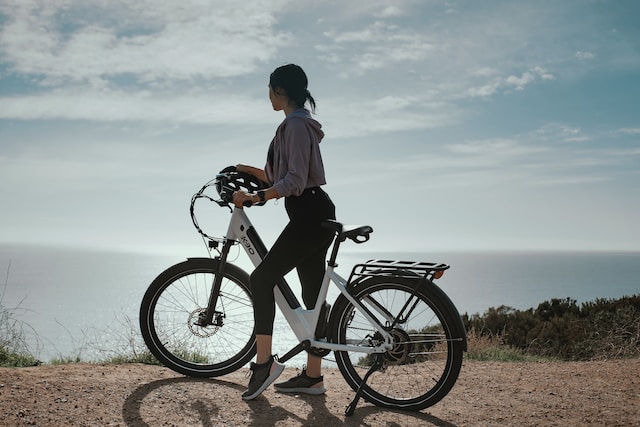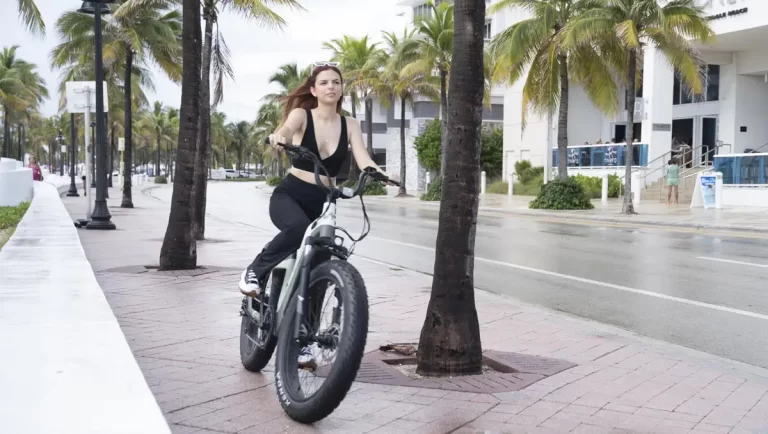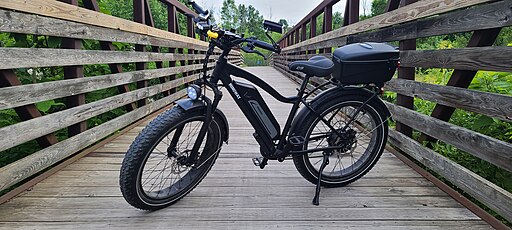Charge Like a Pro: Eco-Friendly E-Bike Hacks You Need to Know
E-bikes are surging in popularity! They offer a fun, eco-friendly way to commute, explore, and get around town. But with this surge comes a natural question: where does the electricity to power these e-bikes come from?
The answer lies in a complex network called the electrical grid. This vast system connects power plants across a region, delivering electricity to our homes, businesses, and yes, even our e-bike chargers. Power plants themselves utilize a variety of resources to generate electricity, including familiar sources like coal, natural gas, and nuclear, as well as renewable options like solar, wind, and hydro power.
Understanding where your e-bike’s electricity comes from is an important step in making informed charging choices. In this blog post, we’ll delve into the world of e-bike battery charging, exploring the different ways electricity is generated and how you can make your e-bike experience even greener.
Key Takeaways
- Grid Power with a Local Twist: The electricity for your e-bike charger comes from the electrical grid, but the source of that electricity can vary depending on your location. Different regions rely on a unique “energy mix” of traditional sources like coal and natural gas or renewable options like solar and wind power.
- Greener Charging Options: The environmental impact of charging your e-bike can be minimized! Explore options like installing solar panels at home to generate clean electricity directly, or utilize portable solar chargers for on-the-go green power.
- Optimize Your Charging Habits: Even with traditional grid-based charging, there are ways to be eco-conscious. Consider charging your e-bike during off-peak hours when the energy mix might be greener due to a higher reliance on renewable sources. Additionally, following recommended charging practices for your specific battery can maximize its efficiency, reducing the overall electricity needed.
- E-Bikes: A Greener Ride: The environmental benefits of e-bikes go beyond charging practices. Compared to gas-powered vehicles, e-bikes boast a significantly lower lifecycle environmental impact. Manufacturing, operation, and maintenance of e-bikes contribute less to greenhouse gas emissions, making them a clear choice for a cleaner future.
- Solar Power Takes the Lead: While DIY wind turbines are technically an option, solar panels are a more practical and efficient choice for most e-bike owners. They offer a reliable and user-friendly way to generate clean electricity for charging your e-bike.
- Portable Green Power on the Go: For those who crave adventure beyond the reach of the grid, portable solar chargers offer a fantastic solution. These compact panels unfold and harness sunlight to generate electricity, conveniently topping off your e-bike battery during your journey.
- Knowledge is Power: Considering the energy mix in your region empowers you to make informed decisions about how you charge your e-bike. Understanding your local grid’s reliance on different sources allows you to choose charging strategies that minimize your environmental footprint.
Where Does the Electricity Come From? – Powering Your E-Bike Through the Grid
Imagine a vast network of interconnected highways, but instead of cars, electricity flows through them. This intricate system, known as the electrical grid, is the invisible force delivering power to your home, your appliances, and yes, the charger that keeps your e-bike humming.
Power plants act as the origin points on this grid, utilizing various resources to generate electricity. Here’s a closer look at some of the main players:
- Fossil Fuels:
- Coal and Natural Gas: These traditional sources burn fuels to create heat, which in turn boils water to produce steam. The steam spins turbines connected to generators, ultimately creating electricity. While reliable, they also contribute greenhouse gas emissions.
- Nuclear Power: Nuclear power plants use controlled nuclear fission to generate heat, which then follows a similar process as fossil fuels to produce electricity. Nuclear power offers a low-carbon alternative, but concerns surround nuclear waste disposal.
- Renewable Resources:
- Hydropower: Dams harness the power of moving water to spin turbines and generate electricity. It’s a clean and reliable source, but dam construction can impact ecosystems.
- Solar Power: Sunlight strikes photovoltaic panels, converting it directly into electricity. Solar is a rapidly growing, clean energy source, although it can be less efficient on cloudy days.
- Wind Power: Wind turbines use the force of moving air to spin generators and produce electricity. Wind power is another clean and growing source, but wind farm placement can be a consideration.
The specific mix of these sources powering your home (and your e-bike charger) depends on your location. Some regions have a higher reliance on fossil fuels, while others prioritize renewable energy sources. Understanding this energy mix is the first step towards making your e-bike charging even more environmentally friendly.
RELATED CONTENT – Guide to Electric Bike Charging Stations
RELATED CONTENT – On the Go Strategies for Charging an Ebike While Traveling
Carbon Footprint of E-Bike Charging
The beauty of e-bikes lies in their potential to be a clean transportation alternative. However, the environmental impact of charging your e-bike depends on the source of the electricity powering your home. This is where the concept of the energy mix comes in.
The energy mix refers to the blend of different sources used to generate electricity in your region. Some areas might rely heavily on fossil fuels like coal and natural gas, which release greenhouse gases when burned, contributing to climate change. This, in turn, increases the carbon footprint (the total amount of greenhouse gases emitted) associated with charging your e-bike.
Let’s look at the carbon footprint of e-bike charging as an example. While the e-bike itself doesn’t directly emit pollutants, the electricity used to charge it can. In regions with a high dependence on fossil fuels, the carbon footprint of e-bike charging might be higher.
However, there’s good news! Many areas are increasingly incorporating renewable energy sources like solar and wind power into their energy mix. These clean sources have a significantly lower carbon footprint, making e-bike charging even more environmentally friendly.
The exact impact of e-bike charging on the environment depends on your location’s specific energy mix. Fortunately, resources like the Energy Information Administration (EIA): https://www.eia.gov/electricity/ allow you to explore the energy mix in your area. By understanding the sources powering your grid, you can make informed decisions about how to further minimize the environmental impact of your e-bike adventures.
RELATED CONTENT – Complete Guide to Electric Bike Charging: Tips, Tricks & Best Practices
Charging Your E-Bike More Greenly: Powering Your Ride with the Sun
E-bikes are inherently eco-friendly, but we can push the green factor even further by focusing on how we charge them. Let’s explore some renewable options to keep your e-bike adventures truly sustainable:
- Harnessing the Power of the Sun: The sun is a powerhouse of clean, renewable energy, and it can be harnessed to directly charge your e-bike battery! Installing solar panels at home allows you to utilize sunlight to generate the electricity that powers your charger. This significantly reduces your reliance on the grid and minimizes the carbon footprint associated with e-bike charging.
If you’re considering this approach, researching best solar panels for charging e-bike battery is a great starting point. Look for panels with a capacity that meets your e-bike’s charging needs and consider factors like efficiency, durability, and warranty. While solar panels are a fantastic option, there are some things to keep in mind: upfront installation costs can be a factor, and efficiency can be reduced on cloudy days.
- A Gentle Breeze as an Alternative? Exploring DIY Wind Turbines (Mention for Completeness):
Wind power is another attractive renewable source. While DIY wind turbine options for e-bike charging exist (you might find information on “DIY wind turbine for e-bike charging” online), it’s important to acknowledge the complexity involved. These systems typically require permits, specific wind conditions, and a higher initial investment compared to solar panels. Additionally, they may not be suitable for all residential areas due to zoning restrictions and noise considerations.
For most e-bike riders, solar panels offer a more practical and accessible solution for green charging at home. However, if you have the resources, space, and appropriate wind conditions, exploring wind power can be an interesting endeavor.
RELATED CONTENT – How to Maximize Your Ebike Range in Strong Winds
- Portable Solar Chargers: Freedom and Flexibility on the Go
For those who crave adventure beyond the reach of the grid, portable solar chargers offer a fantastic solution. These compact panels unfold and harness sunlight to generate electricity, conveniently topping off your e-bike battery during your journey. They’re a great option for extending your range on long rides or adding a charge when you’re out exploring for the day. While their charging capacity might be lower than home setups, they provide clean, on-the-go power, making them perfect for eco-conscious riders.
Cost Considerations:
- Home Solar Panel Installation: The cost of installing a solar panel system for home charging can vary depending on factors like system size, location, and brand. A rough estimate suggests a range of $3,000 to $10,000 [source needed], but it’s always best to consult with local solar installers for a personalized quote. While the upfront cost might seem significant, remember that solar panels generate significant electricity cost savings over time.
- Portable Solar Chargers: Portable solar chargers are a more budget-friendly option compared to home installations. They typically range from $50 to $200 [source needed] depending on wattage and features.
Other Options: Leveraging Existing Renewable Power
If you’re already invested in renewable energy solutions, you might be wondering “can I charge my e-bike with a Jackery?” or a similar portable power station. The answer is yes! Portable power stations can be excellent companions for e-bikes, especially if they’re charged using renewable sources like solar panels. Just ensure your power station has the capacity to handle your e-bike battery’s charging requirements.
By exploring these options, you can significantly reduce your reliance on the grid and make your e-bike experience even more environmentally friendly.
RELATED CONTENT – Charging an Ebike with a Power Bank
RELATED CONTENT – Exploring the Different Charging Speeds of Ebike Models
Minimizing Your Environmental Impact: Every Watt Counts
We’ve explored ways to make your e-bike charging greener by harnessing renewable energy sources. But there’s more to the story! Here are additional strategies to further minimize the environmental impact of your e-bike adventures:
Optimizing Charging Efficiency:
Just like any electronic device, your e-bike battery operates most efficiently under certain conditions. Here are some tips to maximize your charging efficiency:
- Avoid extreme temperatures: Extreme heat or cold can stress the battery and reduce its efficiency. Ideally, charge your battery in a cool, dry environment.
- Don’t overcharge: Most e-bike chargers automatically shut off when the battery reaches full capacity, but it’s still good practice to unplug it once charged. Leaving it plugged in continuously can lead to a slight decrease in efficiency over time.
- Maintain proper battery health: Regularly consult your e-bike manual for proper battery care practices. This can include avoiding full discharge cycles and storing the battery at a moderate charge level when not in use.
By following these tips, you can ensure your e-bike utilizes every watt of electricity efficiently, further reducing the environmental impact of charging.
Charging Time vs. Battery Life
While some believe faster charging times might damage the battery, modern e-bike batteries are designed to handle a range of charging speeds. However, it’s generally recommended to avoid constantly using ultra-fast charging options, as it can generate more heat and potentially reduce battery lifespan over time. Following the manufacturer’s recommended charging practices is always the best approach.
Strategic Charging: Utilizing Off-Peak Hours
The energy mix powering your local grid can fluctuate throughout the day. During peak usage periods, power plants might rely more heavily on fossil fuels to meet demand. The best time of day to charge an ebike for efficiency would be during off-peak hours, typically late evenings or early mornings, when the energy mix might be greener due to a higher reliance on renewable sources. This strategic approach allows you to further minimize the environmental impact of your e-bike charging.
The Bigger Picture: E-Bikes vs. Gas Cars
While charging practices matter, let’s take a step back and consider the bigger picture. Compared to gas-powered vehicles, e-bikes boast a significantly lower lifecycle environmental impact. Manufacturing, operation, and maintenance of e-bikes all contribute less to greenhouse gas emissions compared to traditional cars.
E-bikes require significantly less electricity to operate than gas does to power a car over the same distance.
While optimizing charging practices is commendable, the inherent eco-friendliness of e-bikes truly shines when compared to their gas-guzzling counterparts.
FAQs
A: This depends heavily on the energy mix in your area. Remember, the electricity powering your charger comes from the grid, and that grid can be fueled by a variety of sources. Regions with a high dependence on fossil fuels like coal will have a higher carbon footprint associated with electricity generation. Conversely, areas with a larger share of renewable energy sources like solar and wind will have a lower carbon footprint.
Luckily, resources are available to help you estimate the CO2 emissions associated with charging your e-bike. The US Energy Information Administration (EIA) offers a helpful tool (https://www.eia.gov/) that allows you to explore the energy mix in your region. By understanding your specific energy mix, you can estimate the environmental impact of your e-bike charging.
atteries can vary depending on two key factors:
Battery Size: Larger capacity batteries naturally take longer to charge than smaller ones.
Charger Wattage: Chargers come with different wattages, with higher wattages offering faster charging speeds.
For instance, a typical e-bike battery with a capacity of 250Wh might take around 2-3 hours to charge with a standard charger. However, using a higher wattage charger could reduce that time to 1-2 hours.
Consult your e-bike manual or manufacturer’s website for specific charging time information for your battery and charger combination.
A: Generally, it’s not recommended to leave your e-bike plugged in all the time. Modern e-bike batteries are designed to shut off automatically when fully charged, but continuously keeping them plugged in can slightly reduce their efficiency over time.
For optimal battery health, consult your e-bike manual for recommended charging practices. Most manufacturers suggest unplugging the charger once the battery reaches full capacity. Additionally, they might advise storing the battery at a moderate charge level when not in use for extended periods.
Conclusion
E-bikes offer a fun, efficient, and eco-friendly way to navigate the world. By understanding how your e-bike is charged and exploring options like solar panels or portable chargers, you can further minimize the environmental impact of your rides. Remember, every watt counts!
Taking advantage of off-peak charging hours and optimizing your charging practices can also make a difference. The bigger picture, however, is clear: e-bikes boast a significantly lower environmental footprint compared to gas-powered vehicles.
So, embrace the thrill of e-bikes and contribute to a cleaner future! We encourage you to share your experiences and ask questions in the comments below. Have you explored solar charging for your e-bike? What tips do you have for maximizing battery efficiency? Let’s keep the conversation rolling and empower each other to ride green!
External Sources
U.S. Energy Information Administration (EIA): This comprehensive resource from the EIA provides a wealth of information about the electricity sector in the United States. You can explore data on electricity generation by source (coal, natural gas, solar, etc.) for your specific region. Understanding your local energy mix is the first step towards making informed choices about how you charge your e-bike.
Environmental Protection Agency (EPA): The EPA’s website offers a dedicated section on electric bicycles. Here, you can find information about the environmental benefits of e-bikes compared to traditional gas-powered vehicles. They also explore life-cycle assessments and the overall environmental impact of e-bike use.
National Renewable Energy Laboratory (NREL): While this specific resource from the NREL focuses on the cost of solar panels for homes, the National Renewable Energy Laboratory is a treasure trove of information on renewable energy technologies. Their website offers valuable insights into solar power, wind power, and other renewable energy sources that can be harnessed to charge your e-bike in a sustainable way.
Kristina Grant is not just an enthusiast but a true authority on electric bikes. Nestled in the coastal beauty of Virginia, Kristina has found the perfect backdrop for her passion for electric biking. As a dedicated wife and homeschooling mom, her life revolves around family, faith, and the thrill of adventure.
Originally hailing from Ohio, Kristina's journey with electric bikes began as a curiosity and quickly evolved into a deep expertise. Her blog is a testament to her love for electric biking, combining her fascination for eco-friendly transportation with her coastal lifestyle.
When she's not cruising the beach on her electric bike, you'll find Kristina indulging in her other loves: long walks along the shore, getting lost in a good book, and cherishing moments with her loved ones. With a heart as big as her love for animals, especially cats, Kristina brings a unique perspective to the electric bike world, grounded in her strong faith in God and her dedication to a sustainable lifestyle.
Through her blog, Kristina shares her extensive knowledge of electric bikes, offering valuable insights, tips, and recommendations to fellow enthusiasts. Whether you're a seasoned rider or a newcomer to the electric bike scene, Kristina's blog is your go-to source for all things electric biking, fueled by her passion, expertise, and the scenic beauty of coastal Virginia.







